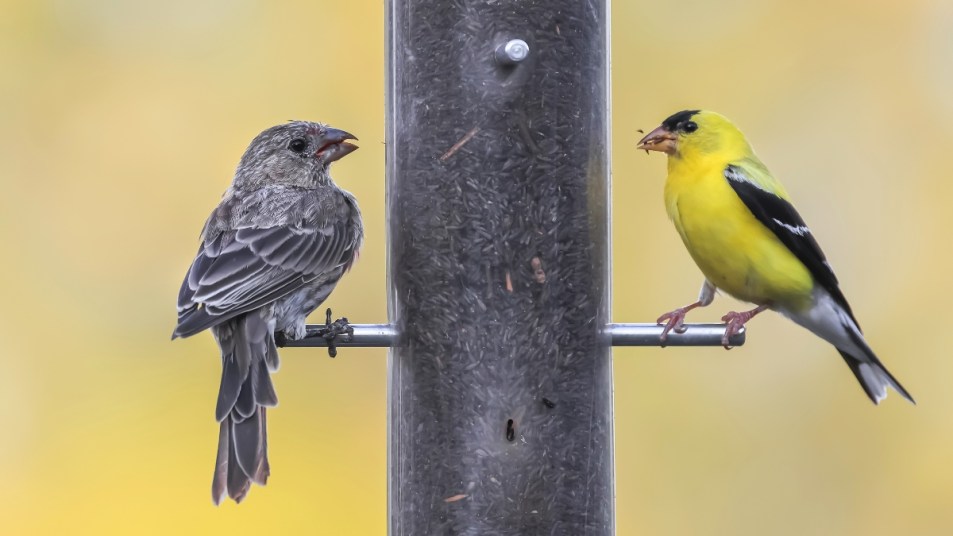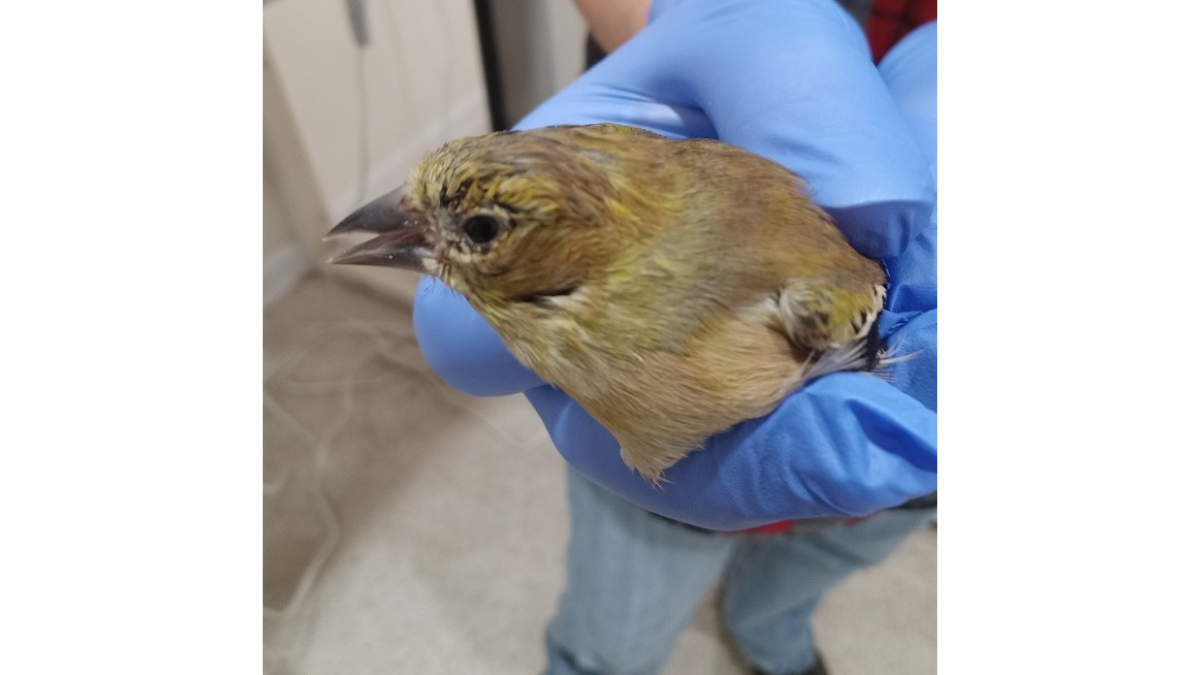Is Your Bird Feeder Spreading Bird Disease? Here’s How To Clean It Safely
Stop the spread of avian disease.

There’s nothing more peaceful than watching the bird feeder through the window as you sip your morning coffee. Observing your feathered friends provides a respite before the busy day ahead — and keeping your bird feeder well-stocked is a great way to preserve this fruitful tradition. However, there’s a lot more to taking care of Mother Nature’s pets than simply filling the feeder with seed. In fact, bird watchers have to be careful, because a feeder can easily become a breeding ground for bacteria. And birds aren’t as resilient as we might like to think.
According to the Raptor Trust, a Bird Rehabilitation and Education Center in Millington, NJ, finches often come down with something called finch eye conjunctivitis, thanks to dirty bird feeders. “This highly transmissible disease results in swollen, crusty eyes, and difficulty seeing in affected birds,” a Facebook post by the organization reads. “With so many individuals putting their faces up to the feeder, infected birds leave behind the disease-causing bacteria, and healthy birds pick it up.”

How To Spot Finch Eye Conjunctivitis
So, what does finch eye conjunctivitis look like? “Oftentimes, [passers by] will discover a subdued finch by their feeder, their eyes so swollen that someone can walk over and pick them up without being noticed by the tiny finch,” the Facebook post explains. “Typically, we can treat this disease with antibiotic eye ointment and antibiotic water, but it’s better if we can prevent them from needing help in the first place!”
In addition, conjunctivitis harms more than one type of bird. “Finch eye conjunctivitis affects goldfinches, house finches, purple finches, and has been reported in species like evening grosbeaks,” says Heather Natola, PhD, a Raptor Trust educator and volunteer coordinator. “At The Raptor Trust, we typically see it in goldfinches and house finches as those are the two most common species in this area.” To better understand how you can keep local birds safe and clean feeders, we asked Dr. Natola for her insight — read it below.
How To Clean Your Bird Feeder
Worried about touching a dirty bird feeder? Dr. Natola notes that humans are not susceptible to finch conjunctivitis, but avian parasites may be cause for concern. Here are her tips for cleaning your feeder safely:
- Wear disposable gloves.
- Fill a large tub with diluted bleach water. The ratio: one part bleach, 10 parts water.
- Take apart the feeder and submerge it in the tub for at least 20 minutes.
- Rinse the feeder thoroughly, then put it back together and leave it to dry.
- Re-fill the feeder with seed, but only when it is completely dry. (Otherwise, mold will develop on the seeds.)
If you don’t have the resources to fill a large tub with bleach water, fill a spray bottle with one part bleach and 10 parts water. Then, spray down the feeder with the mixture and let it sit for at least 20 minutes. Finally, wipe and thoroughly rinse the feeder before putting it back together and letting it dry completely.
How often should you clean your bird feeder?
According to Dr. Natola, you should wash the entire bird feeder every two to three seed refills. So, the time in between washes depends on how popular your feeder is. You may need to wash it biweekly, or if you refill your feeder every two days, you will need to wash the feeder every two days.
If you have seen one or more birds in your neighborhood with finch eye, Dr. Natola recommends cleaning the feeder immediately, and taking it down entirely to prevent the spread. There isn’t a set date for when you can reinstate the feeder, but two weeks is a safe bet.
If this sounds like too much of a time commitment, reconsider having a large bird feeder in your yard. Hanging one or two very small feeders — that can be cleaned easily — may be a much more manageable solution!
How often should you change over your seed?
In keeping your bird feeder clean and safe for your feathered friends, it’s important to change over the birdseed regularly. “We generally recommend changing the seeds over if they get wet,” says Dr. Natola. “Birds are very susceptible to molds and funguses and it’s easy for them to sprout in a dirty, wet feeder. If you aren’t getting a lot of visitors and the food is sitting for a long time, you can try moving the feeder to a different location, preferably close to a bush or a tree that they can sit in while they scope out the area. You can also try a different seed blend to see if your birds prefer different types of food. Once the birds find your feeder, the seed typically goes pretty quickly.”
The bottom line? Bird feeders are probably more work than we’d like, but it’s important that we do our part to prevent the spread of avian disease. If you set a schedule for cleaning your feeders and stick to it, your birds will be just fine.












